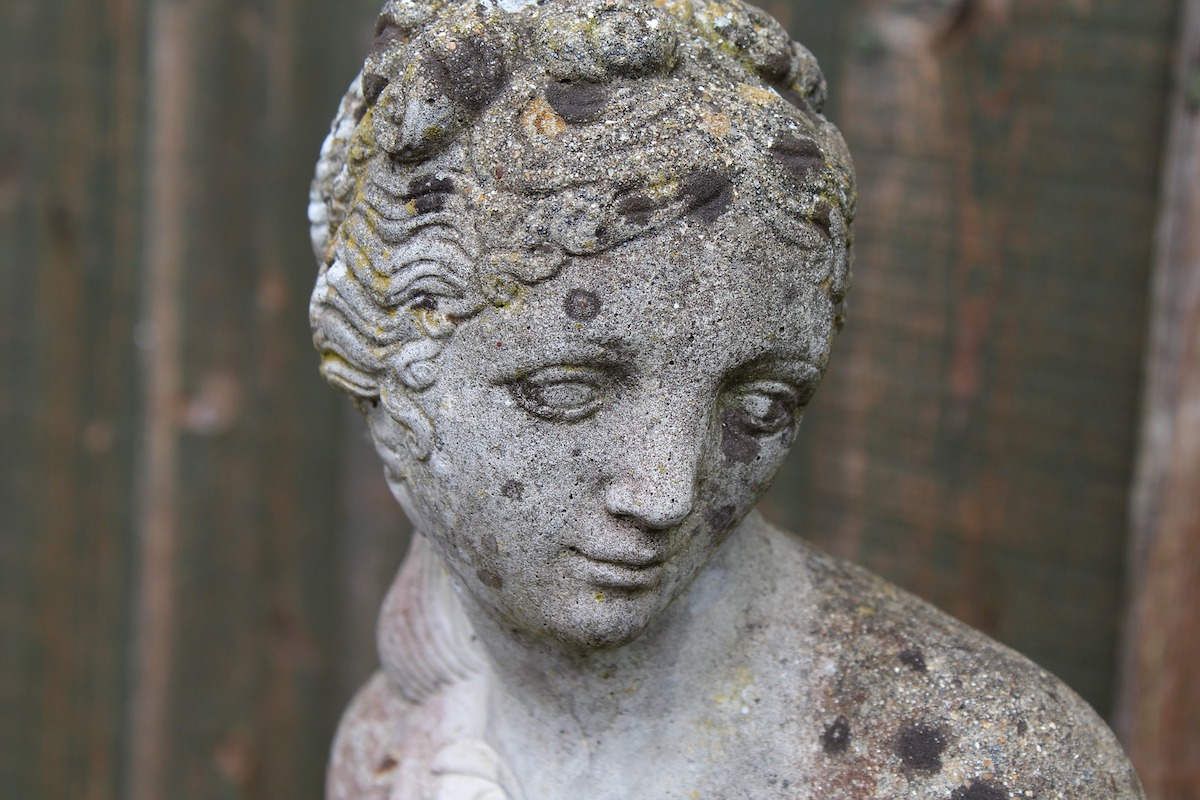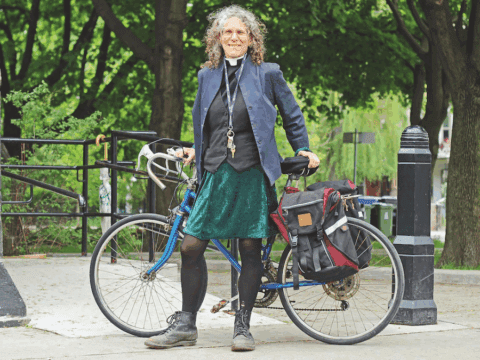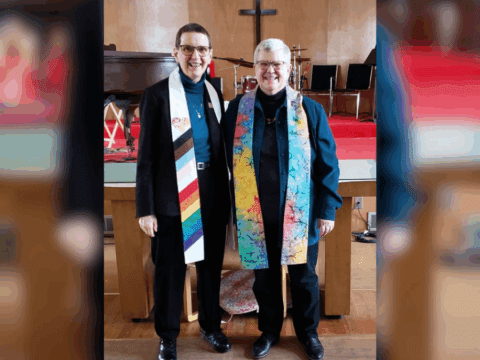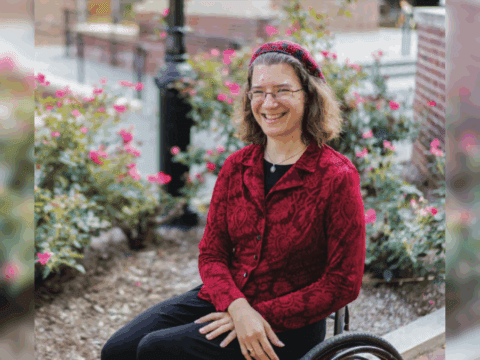In a couple of weeks’ time, death will come knocking at my door. It will take the form of ghosts and ghouls, and small, hooded beings carrying papier mâché scythes up my front steps.
I will open the door, laugh at death and hand it a miniature Kit Kat bar. There won’t be anything scary about it; it’s not at all like the real thing.
Yes, Halloween has long celebrated death. Skeletons become set decoration, and plastic corpses are propped up on front porches, looking like the last guests to leave the party. The trick-or-treat season also lands in the middle of autumn when fading leaves perform a final pirouette before coming down to earth to decompose into mulch. Just as we will one day.
At 54, I’m in the autumn of my life. According to Deathclock.org, an online calculator that predicts the date of your demise, my expected death date will be April 9, 2047. I will be 84 years old. This means that I have 10,777 days, 20 hours, 27 minutes and 54 seconds left to live, baring a sudden accident or an early diagnosis.
So I want to get friendly with death before I fall into its arms forever. I’ve had a few opportunities to make its acquaintance over the years. I was 14 when I attended my first funeral — that of an elderly family friend — and ran away from the service in tears, stunned by the realization that everyone who I loved was going to die. Ten years later, I could not quiet my sobs at the funeral for my biological father, who I never really saw again after he left our family when I was three. I always imagined that we would meet again one day, but when he died at 45, that window of possibility slammed shut forever. These days, death continues to stun me every single time. In fact, I cry ferociously at every funeral I attend. And it’s embarrassing, especially when the deceased is your colleague’s stepfather whom you never even met.
Shakespeare described death as an “undiscovered country from whose bourn no traveller returns.” As such, I want to visit this foreign territory — albeit temporarily — to better prepare myself for my own one-way, postmortem trip. Maybe by staring death in the face, its features will soften a little. Maybe I can wipe the smirk off the grim reaper’s face, too!
So I host a “death dinner” for a bunch of friends to talk about our experiences with death. I start reading the obituaries every day, clipping the ones that have a bit of feeling to go along with the facts. I shop for a coffin, trek with my husband to a new green burial ground and sign up to become a member of the “death positive” movement on the Order of the Good Death website, which promotes the idea that “death itself is natural, but the death anxiety of modern culture is not.”
But my first order of business is checking out coffins. I hate the idea of tossing thousands of dollars into the ground in the shape of a brass-handled, mahogany container and go in search of cheaper options. Costco sells a “serenity cherry” number for $1,799, promising “expedited shipping” although I’m not sure that I’d want to chance a snafu with the courier. At Hamilton’s Affordable Burial & Cremation, Josh talks to me about options that include a $350 particle board box, which is most often used for “unclaimed” bodies, and a perfectly respectable looking, honeycomb cardboard, eco-friendly casket with a plush white interior. (It costs $895, but prices escalate if you exceed the 300-pound weight restriction.) There’s also an “end-of- the-line” sale on miniature urns ($69) and elegant cremation jewellery, including a key chain with the thumbprint of the deceased ($190) and a silver ring with a heart-shaped locket that can hold a pinch of “cremains” ($230). But it’s a dark willow wicker coffin that catches my eye, and it looks as cheery and cosy as an oversized picnic basket. Lifting the lid, I’m a bit disappointed that it isn’t lined in red gingham. I could prepay the $585 price, but given that it’ll be a few decades before I hope I need it, I take a picture instead to show my family. “Remember, it’s the wicker one I’d like,” I tell my oldest daughter, who agrees that, yes, “it is kinda cute.”
Next, I talk my husband into a day trip to Niagara Falls to check out Section 16 of the new 736-plot Willow’s Rest green burial site at Fairview Cemetery — the city’s largest burial grounds. Mark Richardson, the city manager of cemetery services, gives us a tour of what’s essentially a two-acre wildflower meadow framed by weeping willows — their grief-stricken branches sweeping the earth. Green burials aim to return a body as naturally as possible to the earth with the least amount of environmental impact. To that end, certain rules apply: so no headstones, embalming or cremation, and only biodegradable caskets or shrouds are permitted. “Why try to reduce the impact on the environment by composting and recycling your entire life only to spoil all those efforts at the end?” Mark asks. He’s got a point. Most graveyards project a serene pastoral landscape, but underground, there’s a churning stew of noxious embalming chemicals, and tons of heavyweight non-biodegradable cement vaults and varnished coffins. This simple, woodland lot seems a fitting final resting place. “Whaddaya think?” I ask my husband. “Sure, I’m in,” he says. The only people who would ever visit us here are our kids. But how will they find us without a headstone? Well, the office keeps a detailed map. “And they can always use GPS coordinates,” Mark offers.
Some people think talking about death is morbid. But initiatives like Death Over Dinner and Death Cafe are lifting the lid from a formerly taboo topic. Rochelle Martin, a Hamilton-based nurse and “death educator,” facilitates my death dinner, encouraging us to consider what constitutes a good death and instructions that we’d want to give to our loved ones about our last wishes. We share our experiences of death, both good and bad. My friend Jennifer fights back the tears when she remembers how she was asked to observe visiting hours and leave the nursing home one hour before her father died alone. Emily shares the haunting experience of visiting a relative who was in a ward where everyone was brain dead — their bodies hummed along while their minds were long gone. Paula says that she was thankful that she was in the room when her father, who had been difficult when she was growing up but had softened in old age, took his final last gasp. Another shared her frustration at having been appointed executor of a relative’s estate only to find that a second executor had been appointed and given wildly different instructions.
Jill’s story haunts me, though. When her 77-year-old father, a United Church minister, died at home, she helped wash his hands, feet and face after his death. “It felt like the stories I’d heard of Mary Magdalene washing the feet of Christ with her tears,” she says. Just before he died, he shared his vision of seeing his recently departed wife in the room. His breathing slowed, and he looked up to the ceiling. “It seemed to take some effort for him to pull himself away from where he was focused. He looked at me and said ‘It’s beautiful.’ Those were his last words, his last sermon perhaps.”
I loved her story. It shows that a good death — even a beautiful one — is possible.
Like most people, I want to die at home. But the vast majority of us will die in a hospital, where we will be whisked away to a basement morgue and transported to a funeral car that pulls up at a back entrance. And all along, strangers will handle our body.
Still, it doesn’t have to be this way. Some people are choosing a home funeral, in which they are washed and dressed by loved ones, and laid out in a casket cushioned by packs of dry ice in their own bedroom or living room. With this option, families can sit vigil and absorb their loss in a familiar setting over the course of a few days. (They’re very few right now, but I’m betting that their numbers will grow as more baby boomers take back control of their after-death care from the billion-dollar funeral home industry.)
The documentary, In the Parlor: The Final Goodbye, chronicles the experiences of three such families who opted for home funerals. Each is an exercise in intimacy and tenderness, and marked by rituals, such as allowing visitors to draw on the casket of their young friend and draping a silk scarf — with the handprints of her siblings — on an older woman’s casket. “Death is part of life,” one of the mourners says in the film. “Death is as natural as being born. Interesting how so many people want to hide from that.”
My walk through the valley of the shadow of death proves illuminating. For one thing, it’s forced me to plan for my ending. My dying will mean that decisions will have to be made: Cremation or burial? Tombstone or memorial bench. Or no marker at all? Closed casket? Open bar? Which cemetery? Which songs at the service? Organic linen shroud or that fitted dress with the blue roses? Triangle tea sandwiches or a catered lunch? Who will write the obit? Will I be too much of a control freak if I want to write my own? Well, if I figure out some of this stuff now and make my wishes known, it’ll be a relief for my loved ones in their time of grief.
A Mary Oliver poem serves as an inspiration for the attitude that I want to cultivate about death: “When death comes,” she writes, “I want to step through the door full of curiosity, wondering: what’s it going to be like, that cottage of darkness?” I’m inspired, too, by Rochelle Martin’s final plans. She has dry ice packs and a cardboard coffin at the ready in her basement, and after her home funeral, she plans to be laid to rest at the Union Cemetery green burial in Cobourg, Ont. In fact, she’s already asked her three kids to dig the hole. “It has to feel like hard work because then it will be meaningful to them,” she says.
She’s got me hoping that my own kids will buy that wicker casket and hoist it onto the dining room table, where we have shared so many meals together. I hope they’ll be comfortable enough to come and sit by my side, to hold my hand the way I held theirs when they first learned to cross the street and to not be afraid to touch the lips that planted thousands of kisses upon them. I hope that there will be a service at my Unitarian church and that my friends, who are still standing, will sing, play guitar and maybe say some nice things about me. I hope that there will be a boozy, catered lunch somewhere, and that everyone will take an Uber to get home safely and say, “wasn’t that just a great funeral?” At some point, my nearest and dearest will ride out to the green cemetery to bury me deep and weep. Then, they’ll wipe their tears, go home and carry on with their lives.
The French writer Michel de Montaigne wrote: “To begin depriving death of its greatest advantage over us let us deprive death of its strangeness, let us frequent it, let us get used to it.”
We spend our lives acting as if we are never going to die. But maybe getting used to the idea and mulling over its mystery will force us to live a little more. After all, there’s nothing like thinking about death to make you realize that everything is a miracle: waking up in the morning, finding fresh strawberries in the fridge, seeing your dog snoozing contently beside you on the couch while you tap away on your computer keyboard.
Oh, death, where is thy sting? Yes, it’s gonna hurt. But perhaps, if we plan it right, it doesn’t have to be quite so painful.















